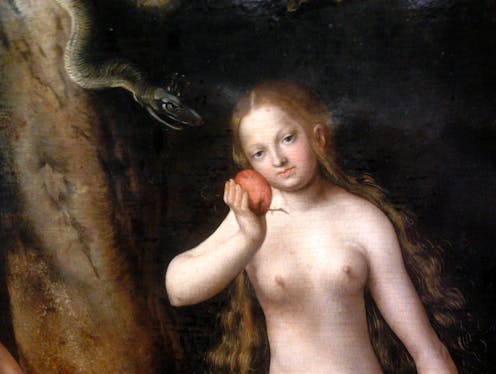Why is the male body the scientific default when the female body drives the reproductive success of our species?
- Written by Edwina Preston, PhD Candidate, The University of Melbourne

American essayist Cat Bohannon loves a bit of pop culture to contextualise her ideas. Eve: How the Female Body Drove 200 Million Years of Human Evolution[1] – her ambitious, funny, intelligent history of female evolution – is threaded with it.
The book opens with a futuristic scene from Prometheus[2], the 2012 prequel to Alien[3]. Archaeologist Elizabeth Shaw is in an AI surgery pod, seeking a life-saving caesarean (she has been impregnated with an alien squid) when an affectless voice gives her an error message: “This medpod is calibrated for male patients only.”
Crash-test dummies, heart-attack symptoms, anti-depressant dosages, air-conditioning systems in large office buildings: we are all pretty aware by now that these are “calibrated for male bodies only”. Alien Prometheus is set in 2093; one can only hope the scientific technology of the late 21st-century turns out to have, at least, a “female-registering” option.
Eve: How the Female Body Drove 200 Million Years of Human Evolution – Cat Bohannon (Hutchinson Heinemann)

















